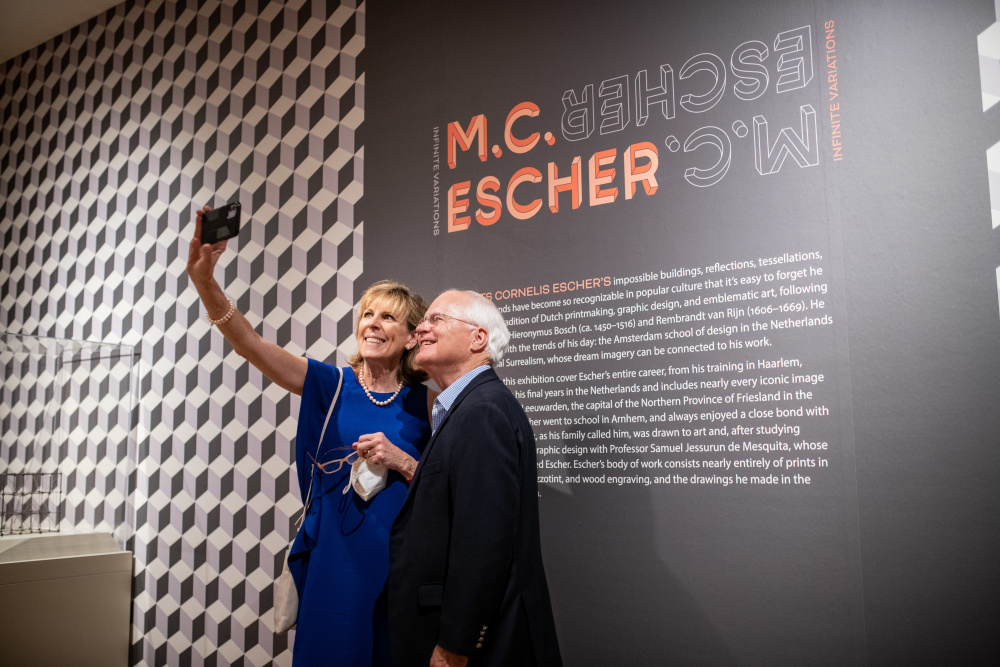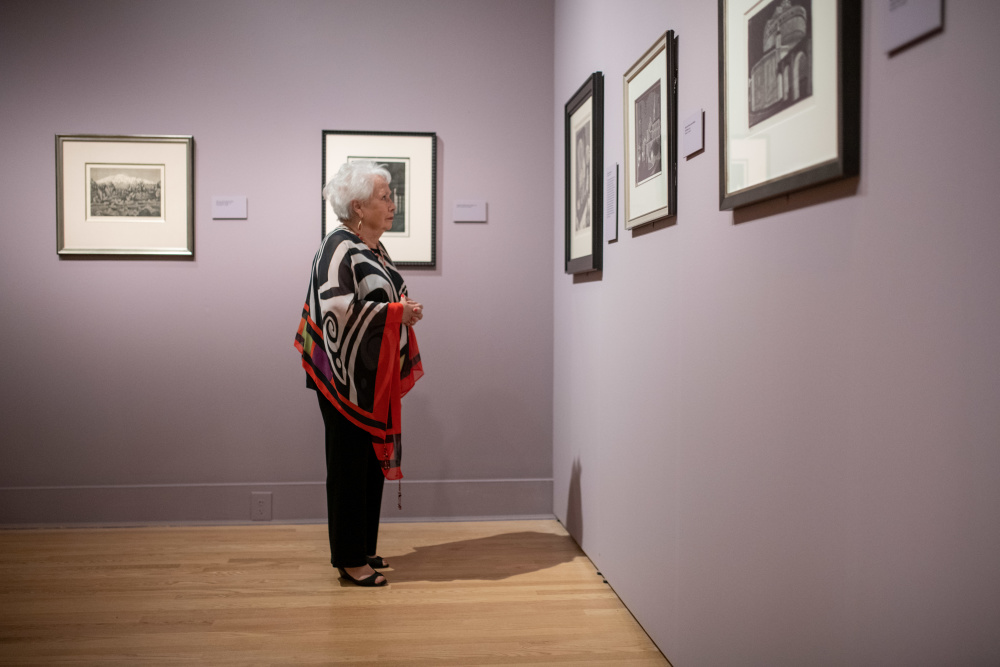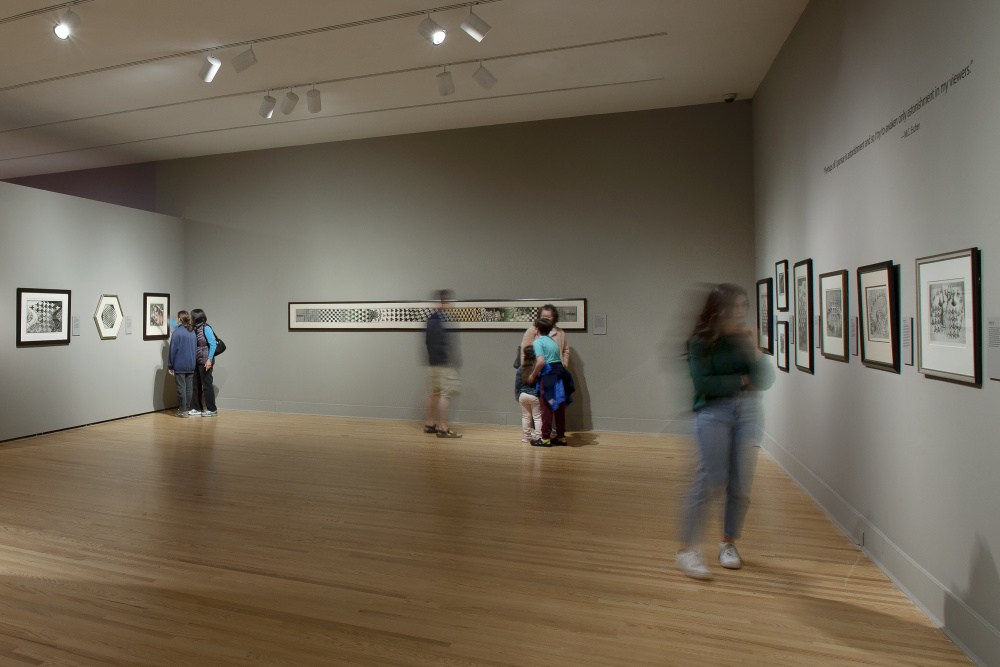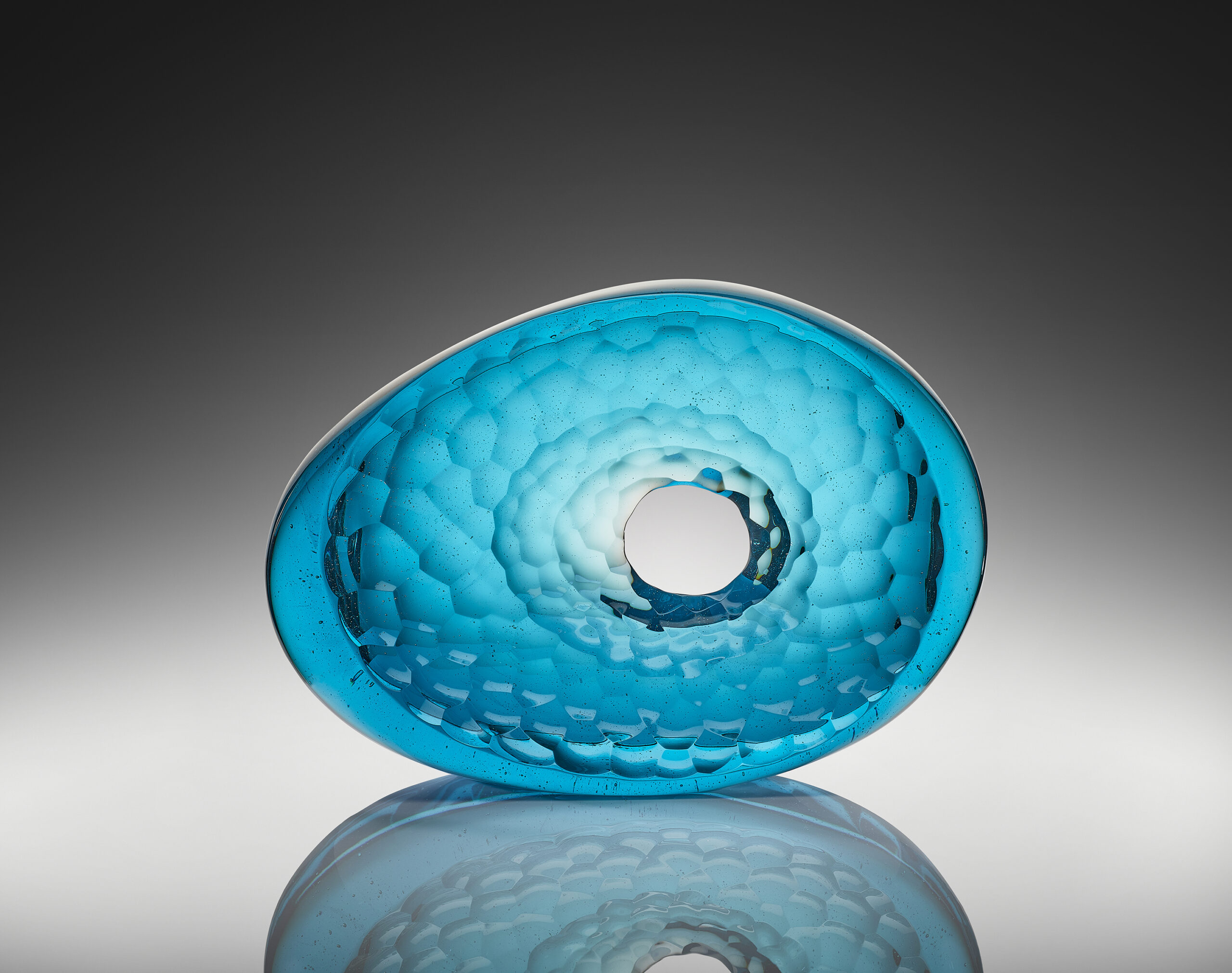- Open today, 10 am to 5 pm. Closed on Christmas and New Years Day.
- Parking & Directions
- Free Admission
M.C. Escher: Infinite Variations
April 15, 2022 — August 28, 2022
Special Exhibition Galleries


Dutch artist Maurits Cornelis Escher (1898–1972) is possibly the world’s most well-known graphic artist, but he once vexed an interviewer by referring to himself as a mathematician! Escher’s artistic output was considerable, and his mesmerizing visual puzzles, tessellations, and impossible buildings are among the most beloved and popular works of art in the world. His fascination with mathematical theory motivated him to produce imagery that constantly challenged notions of reality and its underlying structures.
The Chrysler Museum will present more than 150 works by Escher from the collection of Paul and Belinda Firos of Athens, Greece in M.C. Escher: Infinite Variations. The exhibition will showcase works that span Escher’s career, including the iconic Day and Night, in which two flocks of birds in flight blend into Holland’s landscape, and Ascending and Descending, a 1960 print of an impossible building with a staircase that mirrors a möbius strip. This comprehensive exhibition will trace the imagery that made Escher one of the world’s most recognized artists and feature the full range of media in which he worked, including woodcuts, lithographs, etchings, and even a lithography stone.

“Escher taps into our desire to find the order behind reality, and we are thrilled to collaborate with Mr. and Mrs. Firos to present their considerable collection of Escher’s art to a new generation.” –Lloyd DeWitt, Ph.D., the Chrysler Museum’s Chief Curator and Irene Leache Curator of European Art.
Escher was born in Leeuwarden, the capital of Friesland in the Netherlands, but raised in war-ravaged Arnhem. Although he studied architecture in Haarlem, he was drawn to graphic art by Samuel Jessurun de Mesquita, a teacher at his school who profoundly influenced his graphic style. When Escher moved to Italy, his early output was dominated by advertising and landscape prints there. He became famous for his tessellated, or tile-like, patterns after seeing Moorish tilework on a trip to Spain in 1936. The rise of fascism in Italy forced him back to the Netherlands, where he was forced to sit out the Nazi occupation. He was unable to sell his work because he refused to certify his “Aryanness” and was horrified that he was unable to save his teacher de Mesquita from Auschwitz. While his children emigrated to Canada, Escher remained in Holland, where his increasingly sophisticated imagery gained him an appreciative audience, especially among fans of psychedelia during the 1960s. His oeuvre eventually grew to over 2,000 works before his death in 1972. It was not until Douglas Hofstadter’s 1979 publication of Gödel, Escher, Bach, however, that Escher’s work became tied in the public’s imagination to quantum physics and advanced mathematics, cementing the hold his work gained over the global audience it still enjoys today.
This exhibition was organized by Pan Art Connections.
On view right now

2024 Fall Glass Studio Assistant Exhibition
Exhibition Details

Peter Bremers: Ice to Water
Exhibition Details

